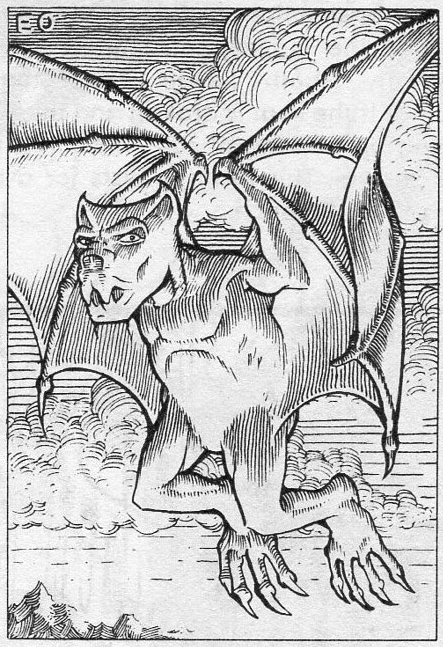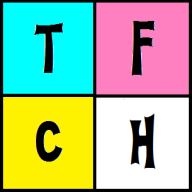The Byakhee
My next stop in the AD&D Deities & Demigods is the sanity-threatening Cthulhu Mythos. For the first post, I present the Byakhee, those monstrous servants of He Who Must Not Be Named, statted for 5E D&D.

These giant furry bat-like creatures have humanoid legs that enable them to stand like men. They can be summoned by clerics of Hastur through use of a gate spell (1-4 Byakhee will appear). (Deities & Demigods, page 44)
Byakhee
Huge aberration, chaotic evil
Armor Class 14 (natural armor)
Hit Points 125 (10d12+60)
Speed 15 ft., fly 60 ft.
Ability Scores STR 25 (+7), DEX 11 (+0), CON 23 (+6), INT 10 (+0), WIS 14 (+2), CHA 12 (+1)
Damage Immunities cold, fire
Senses darkvision 60 ft., passive Perception 12
Languages telepathy 120 ft.
Challenge 5 (1,800 XP)

Innate Spellcasting.. The Byakhee’s innate spellcasting ability is Wisdom (spell save DC 13). It can innately cast the following spells, requiring no material components:
At will: dimension door, plane shift (to and from Carcosa only), teleport
Magic Resistance.. The Byakhee has advantage on saving throws against spells and other magical effects. If an Elder Sign is used as an additional material component for a spell, the Byakhee’s magic resistance does not apply.
Unnatural. The Byakhee does not require air.
Actions
Multiattack. The Byakhee makes two claw attacks.
Claw. Melee Weapon Attack: +10 to hit, reach 5 ft., one target. Hit: 12 (1d10+7) slashing damage. If the target is Large or smaller, it is grappled (escape DC 15). Until this grapple ends, the target is restrained, the Byakhee can automatically hit the target with its claws, and the Byakhee can’t use those claws against another target. The Byakhee has two claw attacks, each of which can grapple one target.
Reactions
Abduct. When a Byakhee has restrained a target with its claws, at the end of a target’s turn if that target remains restrained, the Byakhee may attempt to plane shift to Carcosa. The restrained target must make a DC 13 Charisma saving throw. If the target fails, the target and the Byakhee are transported to Carcosa.

*****
Penance, Texas for The Four Color Hack is up and running. Not only has my Patreon site has been transformed and relaunched, but all three tiers of patron-only perks have been posted. These perks include a new villain for all patrons, a new scenario for Avengers and League Members, and a special surprise for League Members only.



